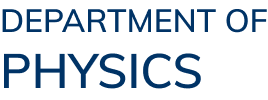Abstract
The maturity of ultracold quantum simulators provides a flexible platform to demonstrate various quantum phenomena and simulate quantum dynamics. The high controllability of experimental tools allows for precise manipulation of both internal and external quantum states of atoms. This thesis focuses on the new development of experimental control with dissipation, leading to unprecedented quantum dynamics. Here, I will describe the essential tools in ultracold simulators, including optical potential traps for cold atoms and methods for collecting quantum state information. One novel model is spinorbit coupling (SOC) where the spin and orbit momentum couple and interact together, which enhances the understanding of various phenomena in atomic and condensed matter physics.
Tunable dissipation offers the possibility in one extra degree of freedom in a SOC system, leading to a non-Hermitian SOC (NHSOC) system. A remarkable phenomenon observed is the chiral state transfer, which occurs when encircling an exceptional point (EP) on the NHSOC dressed energy band. The key mechanism behind this chiral response of quantum state is the non-adiabatic transition (NAT) happening in this encircling path. The flexibility in laser control enables the tools to generate the ‘tomography’ of quantum state evolution, providing a good and reliable visualization of the NAT process, distinct from classical systems. Through the projection of state flip during NAT, different control rates along the same synthetic path in the NHSOC band are investigated. The relationship between NAT and control rate is analyzed in terms of its parameter space and real experimental time. This dependency provides a clear insight into state evolution from a static Hamiltonian to a time-varying basis. Importantly, there are the side effects in experimental realization, which require special treatment. This thesis reports the calibration results and related compensation techniques.
To utilize the metastable state in 173Yb, this thesis presents a home-made clock laser system developed by our group. Due to its ultra-narrow transition linewidth property, this laser requires special arrangements and configurations. More details on the laser locking and stabilization techniques are discussed. These experimental techniques are crucial for establishing this clock transition. This advancement opens new avenues for studying more complex and challenging physics models.
Additionally, due to the fermionic nature of 173Yb atoms, there is a Fermi sea in experiments. An important feature of this system is the momentum-dependent eigenstates with continuity. The observations reveal not just single state, but a group of mixed states. This dispersive property could bridge the gap from single-point observation in the quantum realm to simulations of continuous real material systems.
